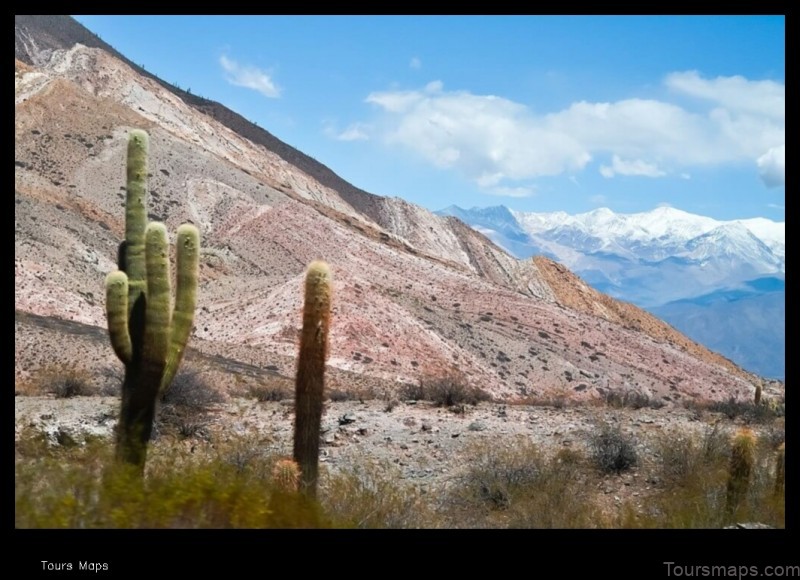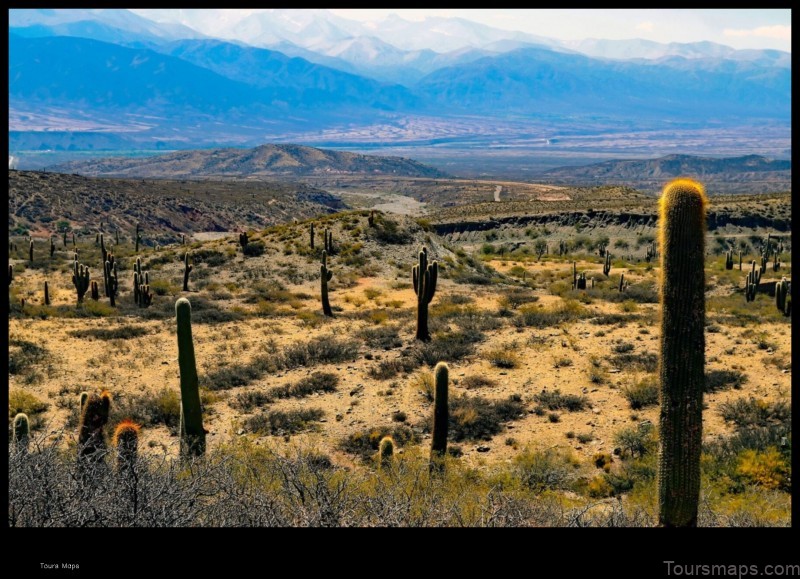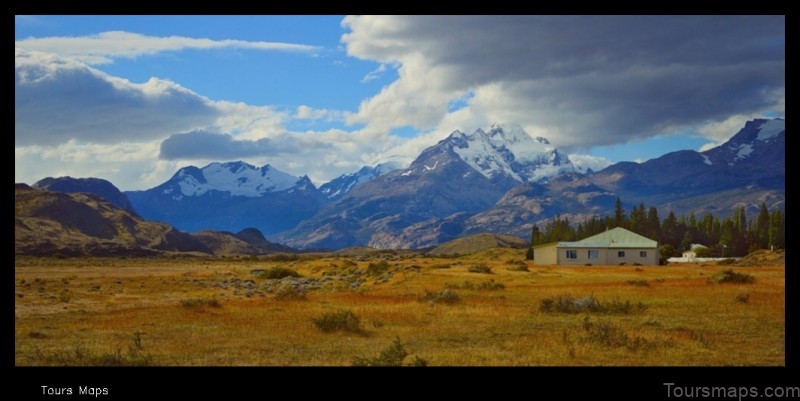
I. Introduction
Argentina is a country located in South America. It is the second-largest country in South America by land area, after Brazil. Argentina is bordered by Chile to the west, Bolivia and Paraguay to the north, Brazil to the northeast, Uruguay to the east, and the South Atlantic Ocean to the south.

II. Geography
Argentina is a vast country with a diverse landscape. The country is home to the Andes Mountains, the Patagonian steppe, the humid subtropical forests of Mesopotamia, and the dry Chaco region. Argentina also has a number of islands, including Tierra del Fuego, the Falkland Islands, and South Georgia and the South Sandwich Islands.
III. Climate
Argentina has a temperate climate, with warm summers and cool winters. The climate varies depending on the region of the country. The northern part of Argentina has a subtropical climate, while the southern part has a more continental climate.
IV. History
Argentina was first inhabited by indigenous peoples around 10,000 years ago. The first Europeans to arrive in Argentina were Spanish explorers in the 16th century. Argentina was colonized by Spain for over 300 years. In the early 19th century, Argentina declared independence from Spain.
V. Culture
Argentina is a diverse country with a rich culture. The country is home to a number of different ethnic groups, including Europeans, Africans, and indigenous peoples. Argentina’s culture is influenced by its diverse population, as well as its history and geography.
VI. Government
Argentina is a federal republic. The country is divided into 23 provinces and the autonomous city of Buenos Aires. The president is the head of state and government.
Argentina has a diversified economy. The country’s main industries include agriculture, manufacturing, and tourism. Argentina is a member of the G20 and the Organization of American States.
Argentina has a population of over 44 million people. The majority of the population is of European descent, with smaller populations of Africans, indigenous peoples, and Asians.
Argentina is a popular tourist destination. The country is home to a number of tourist attractions, including the Iguazú Falls, the Perito Moreno Glacier, and the Buenos Aires Metropolitan Cathedral.
Q: What is the capital of Argentina?
A: The capital of Argentina is Buenos Aires.
Q: What is the population of Argentina?
A: The population of Argentina is over 44 million people.
Q: What is the currency of Argentina?
A: The currency of Argentina is the Argentine peso.
| Topic | Features |
|---|---|
| Argentina Map | – [Map of Argentina](https://en.wikipedia.org/wiki/File:Mapa_de_Argentina.svg) |
| Argentina Travel | – [Visit Argentina](https://www.visitargentina.com/en/) |
| Buenos Aires | – [Buenos Aires](https://en.wikipedia.org/wiki/Buenos_Aires) |
| Argentina Culture | – [Argentine culture](https://en.wikipedia.org/wiki/Argentine_culture) |
II. Geography
Argentina is located in the southern part of South America. It is bordered by Chile to the west, Bolivia and Paraguay to the north, Brazil to the northeast, Uruguay to the east, and the Atlantic Ocean to the south. Argentina has a total area of 2,780,400 square kilometers (1,073,500 square miles), making it the eighth-largest country in South America.
Argentina’s terrain is mostly flat, with the Andes Mountains forming the western border. The country’s highest point is Mount Aconcagua, which is located in the Andes and reaches a height of 6,962 meters (22,838 feet). Argentina also has a number of large rivers, including the Paraná River, the Uruguay River, and the Río de la Plata.
Argentina has a temperate climate, with warm summers and cool winters. The average temperature in Buenos Aires ranges from 16°C (61°F) in July to 28°C (82°F) in January.

III. Climate
Argentina has a wide range of climates, from the humid subtropical climate of the northeast to the cold, dry climate of Patagonia. The average annual temperature in Buenos Aires is 17 °C (62 °F), while the average annual temperature in Bariloche is 7 °C (45 °F). The rainy season in Argentina typically runs from October to April, with the heaviest rainfall occurring in the northeast.
IV. History
Argentina’s history is a complex and fascinating one, spanning over 10,000 years. The first inhabitants of the region were nomadic hunter-gatherers who arrived around 10,000 years ago. In the 16th century, the Spanish arrived and began to colonize the region. They brought with them their language, religion, and culture, which had a profound impact on the indigenous peoples. In the 18th century, Argentina declared its independence from Spain and began to develop its own unique culture. In the 19th century, Argentina experienced a period of rapid economic growth and social change. It became one of the wealthiest countries in the world and attracted immigrants from all over Europe. In the 20th century, Argentina experienced political instability and economic turmoil. However, it has since emerged as a stable and prosperous democracy.
V. Culture
Argentina’s culture is a melting pot of European, Amerindian, African, and other influences. The country’s population is mostly of European descent, with large minorities of Amerindians and Africans. The official language is Spanish, but there are also many regional dialects and languages spoken. Argentina’s culture is rich and diverse, and it is expressed in its music, dance, literature, art, and architecture.
Argentina’s music is a blend of European, Amerindian, and African influences. The country’s most famous musical genre is tango, which originated in the slums of Buenos Aires in the late 19th century. Other popular genres include folk music, rock, and pop.
Argentina’s dance is also a blend of European, Amerindian, and African influences. The country’s most famous dance is the tango, which is a sensual and passionate dance that is often performed in pairs. Other popular dances include folk dances, such as the chacarera and the zamba.
Argentina’s literature is rich and diverse, and it includes works by both European and Latin American authors. The country’s most famous literary figure is Jorge Luis Borges, who is considered one of the greatest writers of the 20th century. Other notable Argentine writers include Ernesto Sabato, Julio Cortázar, and Manuel Puig.
Argentina’s art is also rich and diverse, and it includes works by both European and Latin American artists. The country’s most famous artistic movement is the Buenos Aires School, which was founded in the early 20th century. Other notable Argentine artists include Cándido López, Antonio Berni, and Lucio Fontana.
Argentina’s architecture is a blend of European, Amerindian, and African influences. The country’s most famous architectural style is the Spanish Colonial style, which was introduced by the Spanish colonists in the 16th century. Other notable Argentine architectural styles include the Art Nouveau style, the Art Deco style, and the Brutalist style.
VI. Government
The government of Argentina is a federal republic. The executive branch is headed by the president, who is elected by popular vote for a four-year term. The legislative branch is bicameral, consisting of the Chamber of Deputies and the Senate. The judicial branch is headed by the Supreme Court of Justice.
Argentina is divided into 23 provinces and the autonomous city of Buenos Aires. Each province has its own constitution and government. The provinces are further divided into municipalities.
Argentina is a member of the United Nations, the Organization of American States, and the G20.
VII. Economy
The Argentine economy is a developed market economy with a high Human Development Index (HDI) and GDP per capita. It is the second-largest economy in South America and the 32nd-largest in the world by nominal GDP. Argentina has a diversified economy, with strengths in agriculture, manufacturing, and services. The country is a major exporter of agricultural products, including soybeans, corn, wheat, and beef. Argentina is also a major producer of automobiles, machinery, and chemicals. The country’s economy has been relatively stable in recent years, with GDP growth averaging around 3% per year. However, Argentina has been hit hard by the global financial crisis, and the economy is expected to contract by 1% in 2020.
Demographics
Argentina is a country with a diverse population. The country’s population is estimated to be around 45 million people, making it the second-most populous country in South America. The majority of the population is of European descent, with a significant minority of people of African, Amerindian, and Asian descent. The official language of Argentina is Spanish, but there are also a number of other languages spoken, including Italian, German, and English. The majority of the population is Roman Catholic, but there are also a number of other religious groups represented, including Protestants, Jews, and Muslims.
Argentina is a relatively young country, with most of its population being born after 1950. The country has a high life expectancy, with an average life expectancy of 77 years. The literacy rate is also high, with over 97% of the population being able to read and write.
Argentina is a developing country, but it has a relatively strong economy. The country’s GDP is estimated to be around $450 billion, making it the 33rd largest economy in the world. The country’s main exports include agricultural products, manufactured goods, and fuels. Argentina is also a major tourist destination, with over 5 million tourists visiting the country each year.
IX. Tourism
Argentina is a popular tourist destination, with attractions ranging from the snow-capped Andes Mountains to the lush Iguazú Falls. The country’s diverse landscape and culture offer something for everyone, and there are many ways to experience it.
Here are some of the top tourist destinations in Argentina:
- Buenos Aires: The capital of Argentina, Buenos Aires is a vibrant city with a rich history and culture. It is home to many museums, art galleries, and theaters, as well as some of the best restaurants in the country.
- The Iguazú Falls: Located on the border of Argentina and Brazil, the Iguazú Falls are one of the most impressive natural wonders in the world. The falls are made up of over 275 waterfalls, and they are surrounded by lush rainforest.
- The Perito Moreno Glacier: The Perito Moreno Glacier is one of the largest glaciers in South America. It is located in Patagonia, and it is a popular tourist destination for its stunning beauty and unique blue color.
- The Salinas Grandes: The Salinas Grandes are a salt flat located in the Jujuy Province of Argentina. They are the largest salt flats in the world, and they cover an area of over 10,000 square kilometers.
- The Atacama Desert: The Atacama Desert is the driest desert in the world. It is located in the northern part of Argentina, and it is home to some of the most extreme landscapes in the world.
Argentina is a safe and welcoming country to visit, and there are many ways to experience its rich culture and diverse landscape. Whether you are looking for a relaxing beach vacation or an adventurous outdoor experience, Argentina has something to offer everyone.
X. FAQ
Q: What is the capital of Argentina?
A: Buenos Aires is the capital of Argentina.
Q: What is the population of Argentina?
A: The population of Argentina is approximately 44 million people.
Q: What is the official language of Argentina?
A: The official language of Argentina is Spanish.
Table of Contents
Maybe You Like Them Too
- Explore Doncaster, United Kingdom with this detailed map
- Explore Arroyito, Argentina with this Detailed Map
- Explore Belin, Romania with this detailed map
- Explore Almudévar, Spain with this detailed map
- Explore Aguarón, Spain with this detailed map
